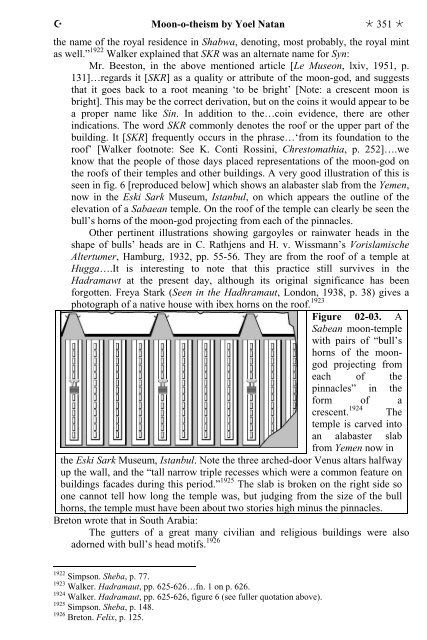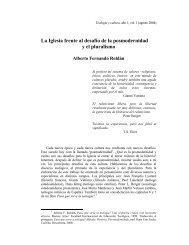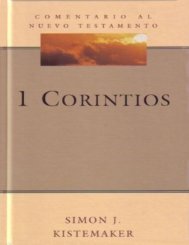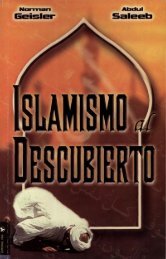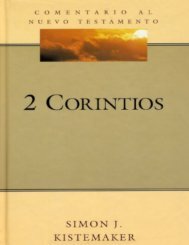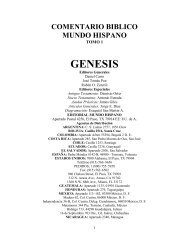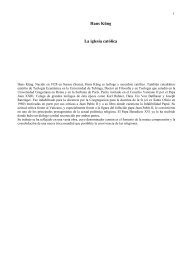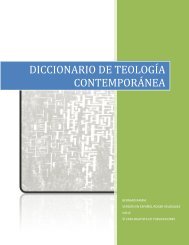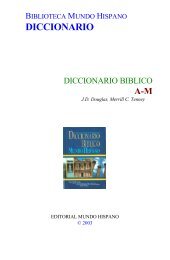Moon-o-theism: Religion of a War- and Moon-god Prophet
Moon-o-theism: Religion of a War- and Moon-god Prophet
Moon-o-theism: Religion of a War- and Moon-god Prophet
- No tags were found...
Create successful ePaper yourself
Turn your PDF publications into a flip-book with our unique Google optimized e-Paper software.
<strong>Moon</strong>-o-<strong>theism</strong> by Yoel Natan 351 the name <strong>of</strong> the royal residence in Shabwa, denoting, most probably, the royal mintas well.” 1922 Walker explained that SKR was an alternate name for Syn:Mr. Beeston, in the above mentioned article [Le Museon, lxiv, 1951, p.131]…regards it [SKR] as a quality or attribute <strong>of</strong> the moon-<strong>god</strong>, <strong>and</strong> suggeststhat it goes back to a root meaning ‘to be bright’ [Note: a crescent moon isbright]. This may be the correct derivation, but on the coins it would appear to bea proper name like Sin. In addition to the…coin evidence, there are otherindications. The word SKR commonly denotes the ro<strong>of</strong> or the upper part <strong>of</strong> thebuilding. It [SKR] frequently occurs in the phrase…‘from its foundation to thero<strong>of</strong>’ [Walker footnote: See K. Conti Rossini, Chrestomathia, p. 252]….weknow that the people <strong>of</strong> those days placed representations <strong>of</strong> the moon-<strong>god</strong> onthe ro<strong>of</strong>s <strong>of</strong> their temples <strong>and</strong> other buildings. A very good illustration <strong>of</strong> this isseen in fig. 6 [reproduced below] which shows an alabaster slab from the Yemen,now in the Eski Sark Museum, Istanbul, on which appears the outline <strong>of</strong> theelevation <strong>of</strong> a Sabaean temple. On the ro<strong>of</strong> <strong>of</strong> the temple can clearly be seen thebull’s horns <strong>of</strong> the moon-<strong>god</strong> projecting from each <strong>of</strong> the pinnacles.Other pertinent illustrations showing gargoyles or rainwater heads in theshape <strong>of</strong> bulls’ heads are in C. Rathjens <strong>and</strong> H. v. Wissmann’s VorislamischeAltertumer, Hamburg, 1932, pp. 55-56. They are from the ro<strong>of</strong> <strong>of</strong> a temple atHugga….It is interesting to note that this practice still survives in theHadramawt at the present day, although its original significance has beenforgotten. Freya Stark (Seen in the Hadhramaut, London, 1938, p. 38) gives aphotograph <strong>of</strong> a native house with ibex horns on the ro<strong>of</strong>. 1923Figure 02-03. ASabean moon-templewith pairs <strong>of</strong> “bull’shorns <strong>of</strong> the moon<strong>god</strong>projecting fromeach <strong>of</strong> thepinnacles” in theform <strong>of</strong> acrescent. 1924 Thetemple is carved intoan alabaster slabfrom Yemen now inthe Eski Sark Museum, Istanbul. Note the three arched-door Venus altars halfwayup the wall, <strong>and</strong> the “tall narrow triple recesses which were a common feature onbuildings facades during this period.” 1925 The slab is broken on the right side soone cannot tell how long the temple was, but judging from the size <strong>of</strong> the bullhorns, the temple must have been about two stories high minus the pinnacles.Breton wrote that in South Arabia:The gutters <strong>of</strong> a great many civilian <strong>and</strong> religious buildings were alsoadorned with bull’s head motifs. 19261922 Simpson. Sheba, p. 77.1923 Walker. Hadramaut, pp. 625-626…fn. 1 on p. 626.1924 Walker. Hadramaut, pp. 625-626, figure 6 (see fuller quotation above).1925 Simpson. Sheba, p. 148.1926 Breton. Felix, p. 125.


